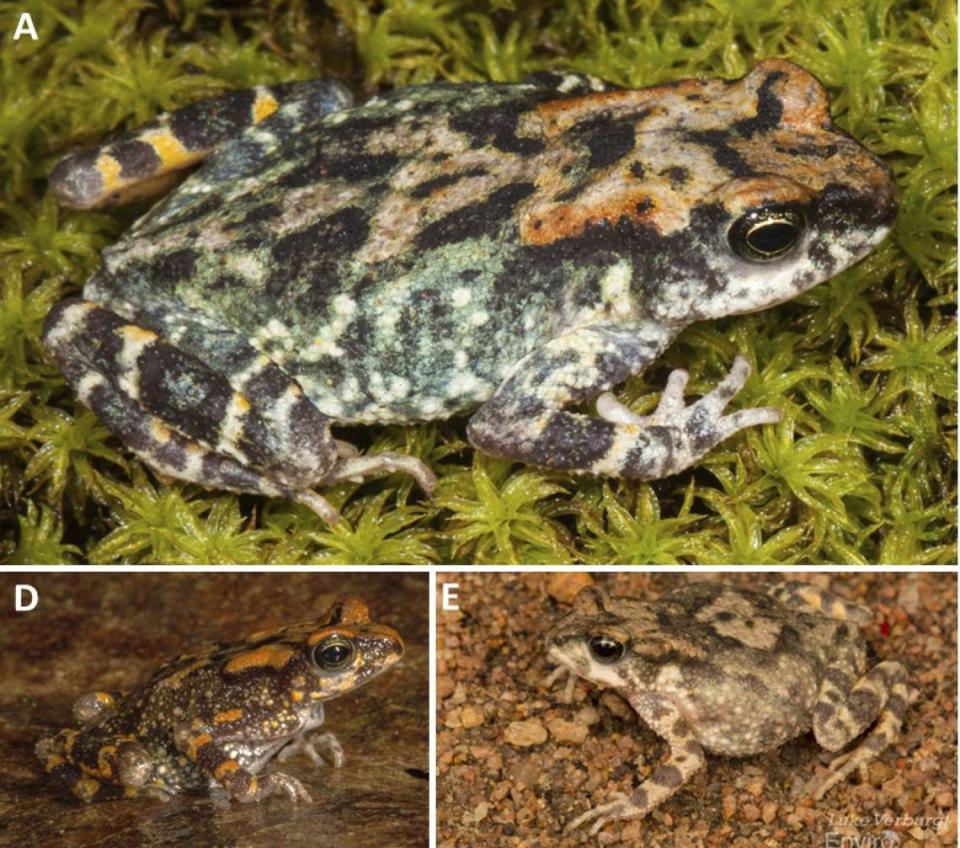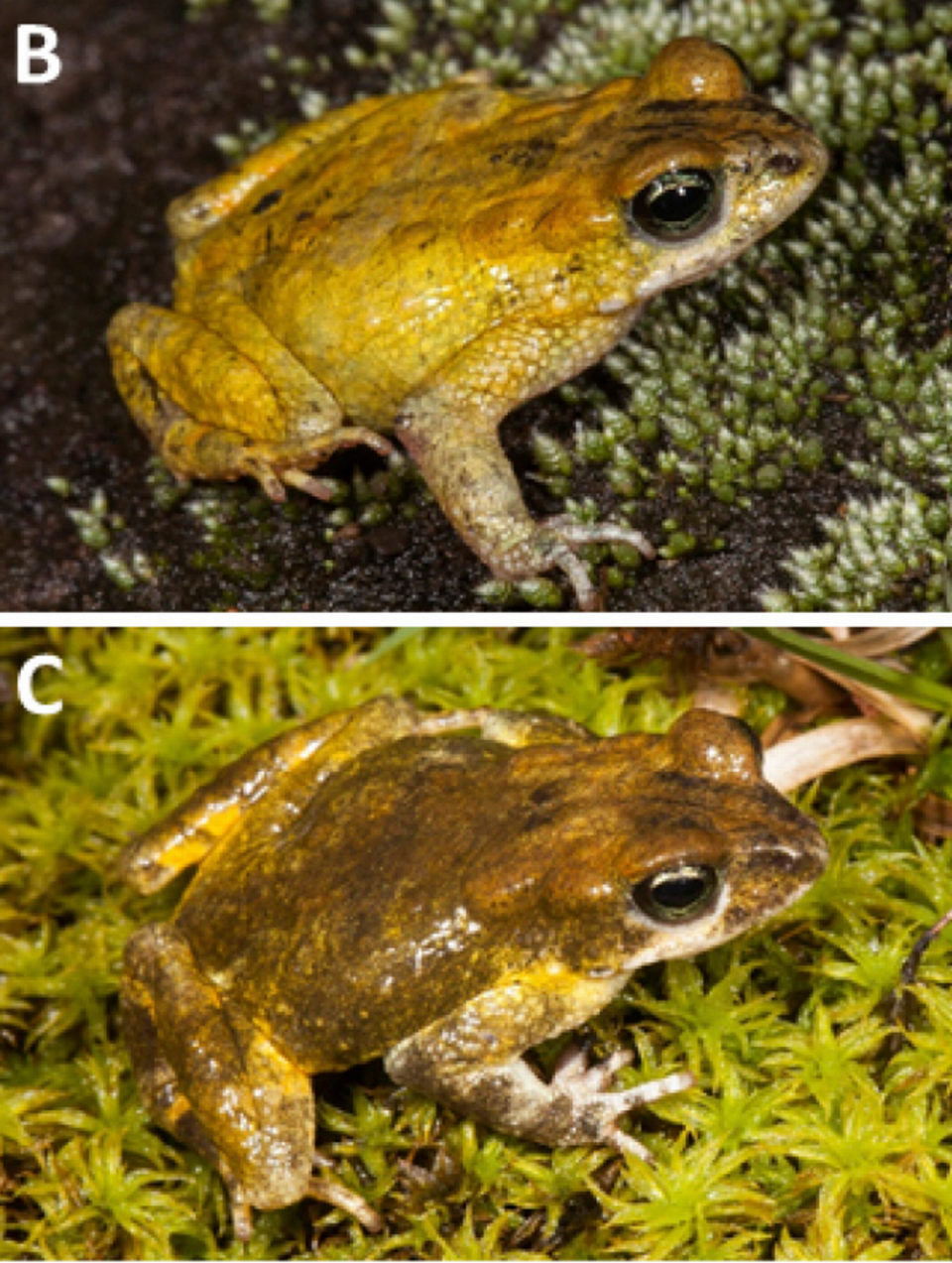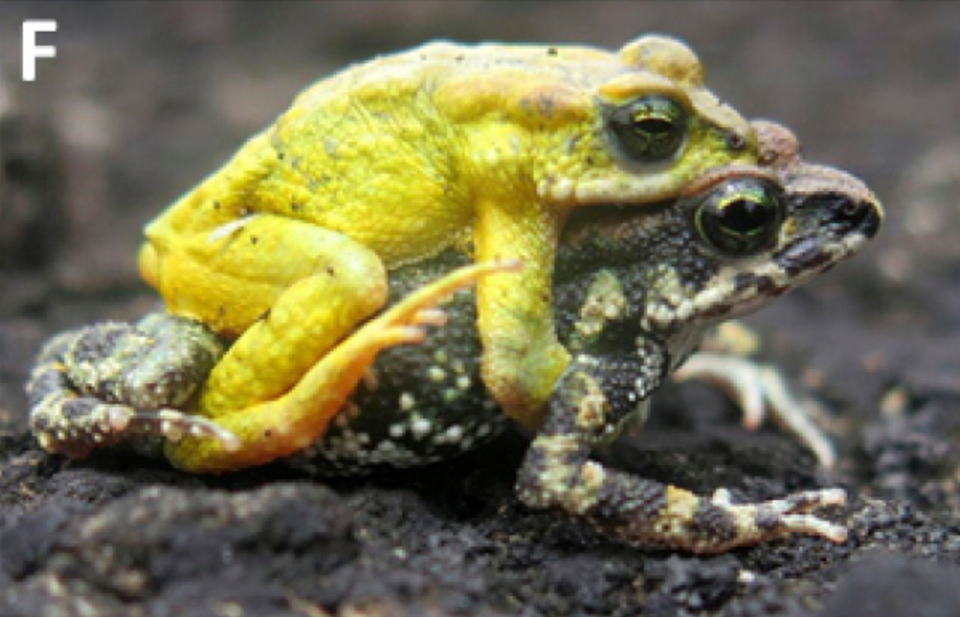Pregnant creature — with ‘sandpaper’-like skin — discovered as new species in Angola
In a rocky area of Angola, a pregnant creature with “sandpaper”-like skin went about its day. Something about the textured animal caught the attention of nearby scientists. They took a closer look — and discovered a new species.
Researchers ventured into rocky escarpment areas of the southern African country on multiple wildlife surveys between 2016 and 2018, according to a study published Nov. 10 in the journal Vertebrate Zoology. They were searching for amphibians.
In moist areas near large granite boulders, researchers captured five textured toads and photographed a few more, the study said. The toads turned out to be a new species: Poyntonophrynus fernandae, or Fernanda’s pygmy toad.
Fernanda’s pygmy toad is considered “medium-sized,” reaching just over an inch in size, the study said. It has a “slender” body, golden eyes and “very rough” or “sandpaper”-like skin. Male and female toads differ in their coloring.
Female Fernanda’s pygmy toads have “complex” and “elaborate” color patterns, researchers said. Photos show the female’s marbled pattern with several shades of brown, black, cream, orange and even some hints of turquoise.

Male toads, however, are “bright yellow” and plainly patterned, researchers said..
After keeping a male toad alive in captivity for several days, researchers discovered that Fernanda’s pygmy toads can change the intensity of their coloring. Their coloring can change “to darker, brighter, or paler shades of each tone,” the study said.
A pair of photos show the same male toad a few days apart. When captured, the frog had a relatively uniform golden color. A few days later, it was a darker yellow-brown.

Researchers found Fernanda’s pygmy toads in several types of habitats, including a coffee plantation and savannah area, but they were always near large granite boulders, the study said.
The toads were seen during the day and night on rocks, plants and the ground. One pregnant toad had a “semi-transparent” stomach showing its “belly full of eggs.” Researchers also saw a mating pair. A photo shows these toads.

Researchers said they named the new species after Fernanda Lages, a genetics researcher and professor based in Angola who has “transformed the professional paths of several young Angolan biologists.”
The new species was found at several sites in Cuanza Sul province, along Angola’s western coast, the study said. Angola borders the Atlantic Ocean to the west, the Democratic Republic of the Congo to the north, Zambia to the east and Namibia to the south.
The new species was identified by its size, coloring, body shape and other subtle physical features, the study said. DNA analysis found the new species had between about 3% and about 12% genetic divergence from other pygmy toads.
The research team included Ninda Baptista, Pedro Vaz Pinto, Chad Keates, Javier Lobón-Rovira, Shelley Edwards and Mark-Oliver Rödel. Researchers also discovered a second new species of pygmy toad.
‘Virgin birth’ at Chicago zoo excites wildlife experts. See the ‘surprise’ baby shark
‘Miniature’ mountain creature — with ‘squeaker’-like call — discovered as new species
‘Flame-colored’ creatures found mating near mountain stream turn out to be new species

